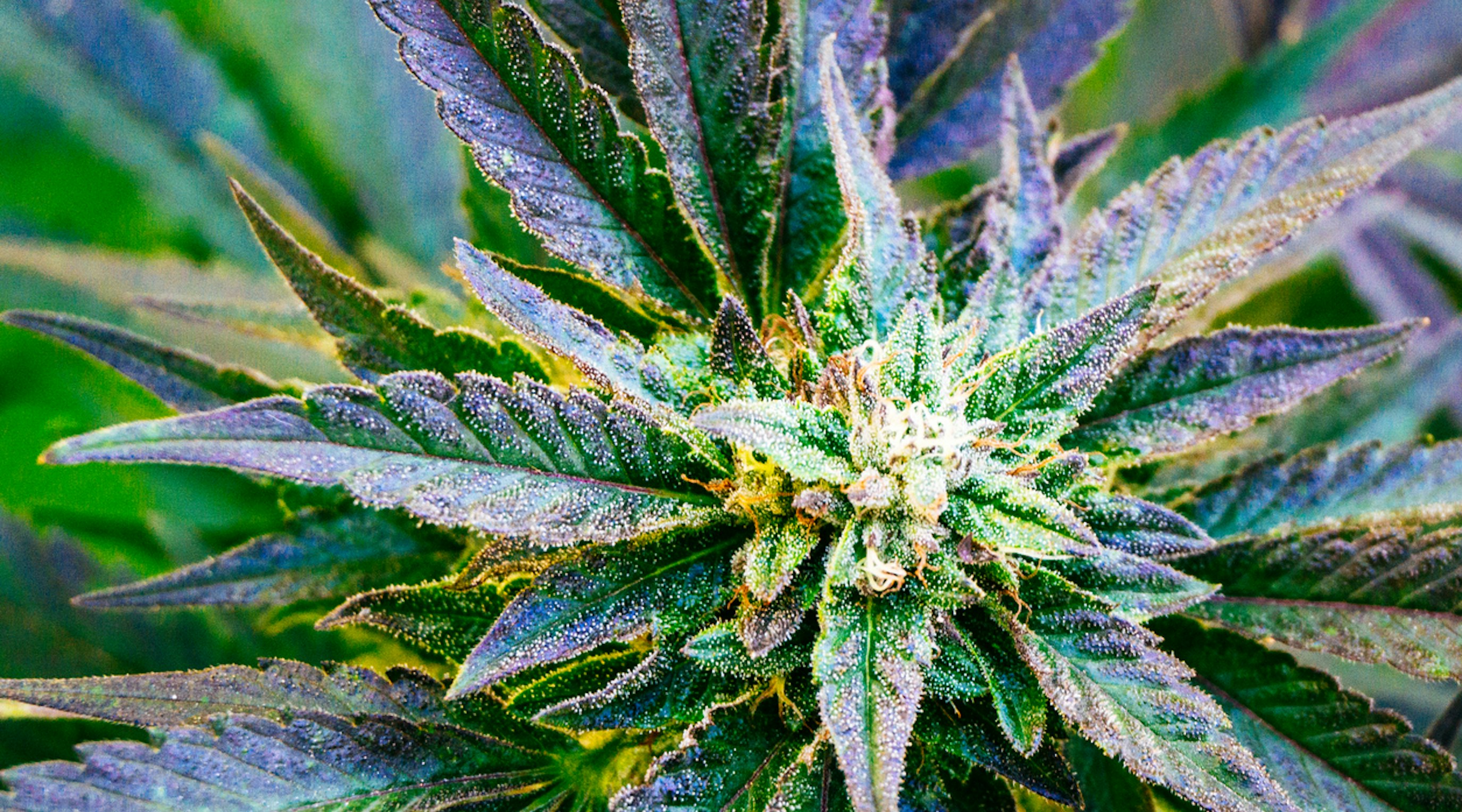Cannabis is an incredibly complex plant that contains thousands of active compounds. While the most well-known compounds may be cannabinoids - and of these, CBD and THC enjoy the most coverage - another class of compounds contribute significantly to the potential benefits of this incredible plant: Terpenes.
Contents
What are terpenes?
Terpenes are a natural group of unsaturated hydrocarbons found in the essential oils of plants. There are more than 20,000 of these compounds in the plant world, and they contribute to the aroma and flavour of herbs, spices, flowers, trees - and virtually all other plant types.
For example, some terpenes, such as limonene, may contribute to the citrussy scent of fruits such as lemons, limes and oranges. Another terpene, pinene, has a woody smell that we associate with coniferous trees - in which it is found in abundance. Likewise, in the cannabis world, the presence of different terpenes plays a key role in the distinctive aroma of different cultivars.
But terpenes contribute more than just their scents. Many have also been found to possess impressive therapeutic properties. This means the terpene profile of your medical cannabis cultivar could be more important than you think.
What is a terpene profile?
There are around 150-400 terpenes present in different Cannabis Sativa L. cultivars. Not all terpenes are present at the same time - only a handful may be present in meaningful quantities. The traceable terpene content in a given cannabis cultivar is known as the plant’s “terpene profile”.
Some research suggests that terpenes can work synergistically with cannabinoids and other cannabis compounds to enhance certain therapeutic effects of the plant - a phenomenon known as the “entourage effect”. For this reason, being familiar with the therapeutic properties of the most common cannabis terpenes can be invaluable for medical cannabis patients.
So, let’s take a closer look at some of the most common cannabis terpenes and their health properties.
Cannabis terpenes and their benefits
Myrcene
Myrcene is the most common terpene found in cannabis. It is a monoterpene that is also found in a huge number of other plants, including hops, mangos, cardamom, and thyme. Its musky aroma has seen it added to a wide range of products, including perfumes and cosmetics.
Its presence in certain plants may partly explain their use in traditional herbal medicine practices from all over the world. More recently, scientific evidence indicates that myrcene may have anti-inflammatory properties as well as being beneficial in pain relief. It has also been reported to possess antifungal, antibacterial, sedative, anti-cancer and antioxidant properties.
Linalool
As well as being commonly found in a large number of cannabis cultivars, linalool is also abundant in plants such as lavender, mint, sweet basil, and cinnamon. But you may have come across this common terpene closer to home. Like many other terpenes, linalool is commonly added to scented products, such as perfumes and candles, as well as household cleaning products!
But we’re here to talk about linalool’s therapeutic properties - and there are many! Current evidence indicates that linalool may have anti-anxiety and antidepressant potential, thanks to its activity in the central nervous system. Some evidence also indicates linalool may possess anti-inflammatory, antibacterial, anticonvulsant, and anti-cancer potentials.
Limonene
Another common feature in cleaning products, perfumes, and cosmetics, as mentioned earlier, limonene is abundant in citrus fruits. However, it can also be found in cumin, neroli, and bergamot, to name a few.
Limonene has been studied extensively for its therapeutic effects, which include analgesic (pain-relieving), anti-inflammatory, antioxidant, antinociceptive, antiviral, and anti-anxiety potential. In particular, limonene has been found to possess therapeutic benefits for metabolic and cardiovascular disorders.
Humulene
Humulene (α-humulene) is probably best known for its presence in hops (Humulus lupulus), contributing to the distinctive aroma of beer - which, incidentally, can often be reminiscent of some cannabis cultivars. As cannabis and hops belong to the same biological family (Cannabaceae), it makes sense that they should both commonly contain high concentrations of humulene.
Unlike other terpenes, humulene demonstrates potential appetite-suppressing properties, which may make it beneficial in the treatment of conditions related to overeating or obesity. However, it is its anti-inflammatory and analgesic properties that are of particular interest to many researchers as a promising natural alternative to some pharmaceuticals.
Alpha-pinene
Alpha-pinene (α-pinene) is one of the most abundant terpenes found in nature - including in cannabis plants. It can be found in a wide range of plants, including rosemary, eucalyptus, and citrus fruits. Its pleasant aroma and potential benefits make it a common sight in aromatherapy and herbal remedies.
Studies have shown that alpha-pinene possesses antimicrobial effects (it has proven effective against MRSA, B. cereus, E. coli, and Campylobacter jejuni), as well as anti-inflammatory potential. Moreover, some evidence suggests that pinene may have bronchodilator effects which could make it beneficial to patients with asthma.
Caryophyllene
Interestingly, caryophyllene is the only terpene known to activate cannabinoid receptors in the body. Also known as beta-caryophyllene (BCP), caryophyllene is common in many plants, including black pepper, cinnamon, hops, and basil. It possesses a spicy aroma which may be evident in some cannabis cultivars.
Its interaction with the endocannabinoid system may explain some of the health benefits of caryophyllene, which may include anti-inflammatory, antioxidant, anti-anxiety, antidepressant, and analgesic properties.
How do terpenes affect the body?
Each individual terpene has a unique effect on the body, depending on its chemical makeup.
Terpenes are also thought to modulate the effects of other cannabinoids, such as THC and CBD. This is known as the “entourage effect” where different components of the cannabis plant work together to produce a greater overall effect.
What terpenes are good for anxiety?
Linalool, myrcene, limonene, and beta-caryophyllene have all been shown to offer potential benefits and play an important role in the treatment of anxiety with medical cannabis.
Are terpenes safe to vape?
Terpenes are a natural part of the cannabis flower and are safe to vape when included in a medical prescription. Always stick to the dosage recommended by your prescribing specialist.
Terpenes as part of your medical cannabis therapy
As we mentioned earlier, terpenes can work with each other and with other compounds (including cannabinoids) to enhance certain effects of cannabis. Understanding the potential role of terpenes and their presence in your chosen medical cannabis cultivar could help enhance the overall benefits of your medical cannabis treatment.
Share article
Did you like this article?
It is important to seek medical advice before starting any new treatments. The patient advisors at Releaf are available to provide expert advice and support. Alternatively, click here to book a consultation with one of our specialist doctors.
Elevate your wellness with medical cannabis
Get comprehensive care, convenience, and confidence with an all-in-one treatment plan.
Am I eligible?Authors
Emily, an accomplished content writer with a specialisation in cannabis and alternative health, leverages her five years in the sector to enhance education and diminish stigma around medicinal cannabis use.
Editorial Policy
All of our articles are written by medical cannabis experts, guided by strict sourcing guidelines, and reference peer-reviewed studies and credible academic research. Our expert clinical team and compliance specialists provide valuable insights to ensure accuracy when required. Learn more in our editorial policy.
Need more help?










